-
 Bitcoin
Bitcoin $107,397.3430
-0.20% -
 Ethereum
Ethereum $2,467.5633
1.33% -
 Tether USDt
Tether USDt $1.0002
0.01% -
 XRP
XRP $2.1994
0.71% -
 BNB
BNB $655.8723
1.07% -
 Solana
Solana $157.3780
4.63% -
 USDC
USDC $1.0000
0.02% -
 TRON
TRON $0.2792
1.23% -
 Dogecoin
Dogecoin $0.1645
0.50% -
 Cardano
Cardano $0.5666
1.83% -
 Hyperliquid
Hyperliquid $39.8730
3.91% -
 Bitcoin Cash
Bitcoin Cash $514.7673
5.02% -
 Sui
Sui $2.7969
-0.51% -
 Chainlink
Chainlink $13.2880
0.07% -
 UNUS SED LEO
UNUS SED LEO $9.1148
-0.60% -
 Avalanche
Avalanche $17.9247
0.34% -
 Stellar
Stellar $0.2351
-0.98% -
 Toncoin
Toncoin $2.9456
2.69% -
 Shiba Inu
Shiba Inu $0.0...01144
-0.74% -
 Litecoin
Litecoin $85.9064
-0.62% -
 Hedera
Hedera $0.1495
1.47% -
 Monero
Monero $319.0339
3.82% -
 Polkadot
Polkadot $3.3940
-0.40% -
 Dai
Dai $1.0000
0.01% -
 Ethena USDe
Ethena USDe $1.0003
0.00% -
 Bitget Token
Bitget Token $4.5223
-1.95% -
 Uniswap
Uniswap $7.1384
-0.02% -
 Aave
Aave $272.7534
0.72% -
 Pepe
Pepe $0.0...09836
2.57% -
 Pi
Pi $0.5107
-2.06%
Can you buy the bottom when the volume shrinks and touches the lower Bollinger band during sideways fluctuations?
A drop in volume near the lower Bollinger Band in sideways crypto markets may signal weakening bearish pressure, hinting at a potential bounce—best confirmed with candlestick patterns or RSI.
Jun 30, 2025 at 08:08 pm
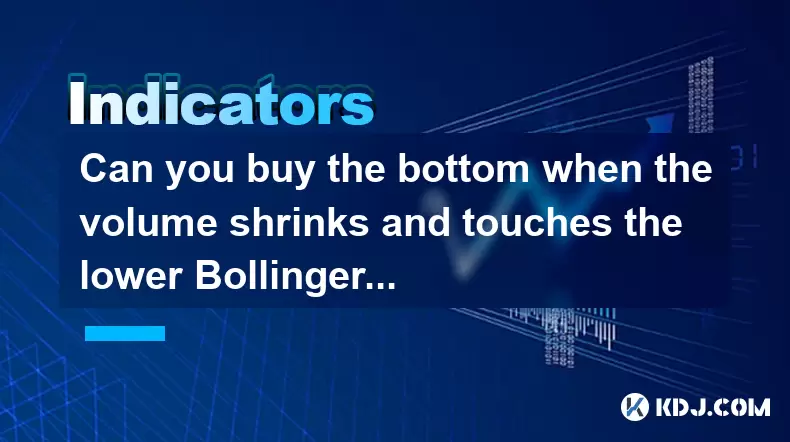
Understanding the Bollinger Band and Volume Relationship
When analyzing cryptocurrency price charts, Bollinger Bands are commonly used by traders to identify potential overbought or oversold conditions. The indicator consists of a middle band (usually a 20-period moving average) and two outer bands that represent standard deviations above and below the middle line. During sideways market conditions, prices often oscillate between these bands.
In this context, volume plays a crucial role in confirming potential reversal points. A drop in volume while the price touches the lower Bollinger Band may suggest weakening selling pressure, which could indicate an upcoming bounce. However, it's essential to avoid making decisions based solely on one signal.
Interpreting Sideways Market Dynamics
In a sideways fluctuation, the market is neither trending up nor down. This consolidation phase typically reflects a balance between buying and selling forces. Traders often look for signs of breakout or reversal within this range-bound environment.
The lower Bollinger Band acting as support can be a key area to watch. If the price repeatedly touches the lower band without breaking through, it suggests strong support. Combining this with shrinking volume might imply that sellers are losing control, increasing the probability of a bullish move.
However, caution is necessary because false signals are common in such markets. Relying only on Bollinger Bands and volume without considering other technical indicators or market sentiment can lead to premature entries.
Volume Shrinkage and Its Significance
A decline in trading volume during a downtrend within a sideways pattern can indicate that bearish momentum is fading. Lower volume at the lower Bollinger Band might mean fewer sellers are willing to push the price further down, suggesting a potential shift in control to buyers.
This situation can be interpreted as a sign of accumulation, especially if the price stabilizes after touching the lower band. It’s important to observe whether the next candlestick shows strength, such as a bullish engulfing pattern or a hammer formation, which could confirm a reversal.
Still, volume shrinkage alone isn't enough to justify a buy decision. Confirmation from other tools like RSI, MACD, or order flow analysis should be considered before entering a trade.
Practical Steps for Evaluating the Scenario
If you're considering buying when the price touches the lower Bollinger Band with shrinking volume, follow these steps carefully:
- Confirm the market is in a sideways pattern using trendlines or moving averages.
- Observe how many times the price has touched the lower Bollinger Band previously and whether it bounced each time.
- Check volume levels relative to recent candles—ensure it's significantly lower than average.
- Look for candlestick patterns near the lower band that suggest rejection of lower prices.
- Use additional indicators like RSI to verify oversold conditions or MACD for possible bullish divergence.
Entering a position too early without confirmation can result in losses, especially if the market breaks out of its sideways pattern unexpectedly.
Risks and Common Pitfalls
One of the most common mistakes traders make is assuming that every touch of the lower Bollinger Band with low volume will result in a bounce. In reality, markets can remain irrational for extended periods, and sideways movements can suddenly turn into breakouts or breakdowns.
Another risk is ignoring fundamental or news-driven volatility. Even if technical indicators align, sudden announcements or macroeconomic events can disrupt expected price behavior.
Additionally, overtrading based on incomplete signals can erode capital quickly. It's vital to maintain strict risk management practices, including stop-loss placement and position sizing, even in seemingly low-risk scenarios.
Backtesting and Historical Validation
Before applying any strategy in live trading, backtesting historical data is essential. You can use platforms like TradingView or Binance’s historical data to analyze how often the price rebounded after touching the lower Bollinger Band with declining volume during sideways phases.
You might notice that in some cases, the price continues to drift lower despite shrinking volume, especially if there's no clear support level nearby. On the other hand, strong bounces often occur when multiple factors align, such as a bullish candlestick pattern and positive divergence in momentum indicators.
Keep in mind that past performance doesn't guarantee future results, but consistent patterns across multiple assets and timeframes can increase confidence in the strategy.
Frequently Asked Questions
Q: Can I rely solely on Bollinger Bands and volume to make trades?
No, relying on a single indicator or metric increases the risk of false signals. Always combine Bollinger Bands and volume analysis with other tools like candlestick patterns, RSI, or MACD for better accuracy.
Q: What timeframes are best for observing Bollinger Band touches with low volume?
Shorter timeframes like 15-minute or 1-hour charts are useful for spotting immediate opportunities, while daily charts offer broader context. Use multiple timeframes to confirm alignment.
Q: How do I differentiate between genuine reversals and fakeouts?
Watch for strong candlestick closures above the lower Bollinger Band and increasing volume in the next few candles. Also, check for confluence with key support levels or Fibonacci retracements.
Q: Should I always place a stop-loss when buying the bottom in sideways markets?
Yes, placing a stop-loss is crucial. Set it just below the lower Bollinger Band or the recent swing low to protect against unexpected breakdowns.
Disclaimer:info@kdj.com
The information provided is not trading advice. kdj.com does not assume any responsibility for any investments made based on the information provided in this article. Cryptocurrencies are highly volatile and it is highly recommended that you invest with caution after thorough research!
If you believe that the content used on this website infringes your copyright, please contact us immediately (info@kdj.com) and we will delete it promptly.
- Coinbase, Altcoins, and Listings: What's the Buzz?
- 2025-07-01 00:30:11
- Chainlink's Bullish Signals: Investors Bet on Long-Term Value
- 2025-07-01 00:50:12
- Bybit, Kraken, and Tokenized Stocks: A New Era for Trading?
- 2025-07-01 00:30:11
- MicroStrategy, S&P 500, and Crypto News: A Wild Ride for Bitcoin and Beyond
- 2025-07-01 00:55:11
- Week Review: Neo Updates, Crypto Market Movers, and the Stablecoin Evolution (June 23-29)
- 2025-07-01 01:00:12
- Crypto.com & dYdX: Derivative Trading Revolutionized for Everyone
- 2025-07-01 00:35:12
Related knowledge
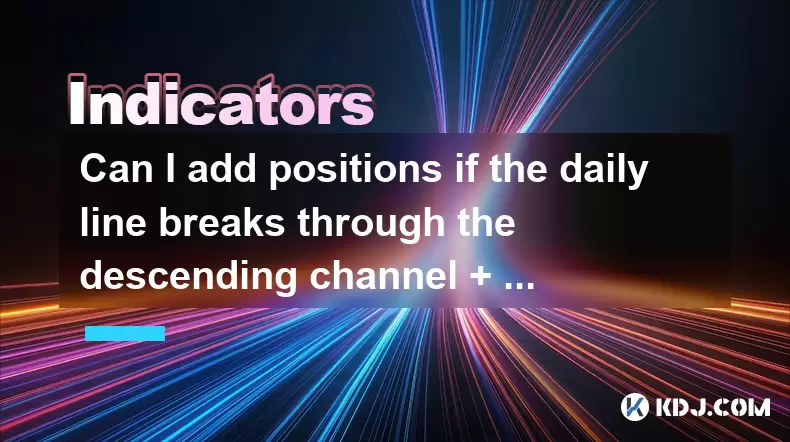
Can I add positions if the daily line breaks through the descending channel + the 30-minute moving average is in a bullish arrangement?
Jun 30,2025 at 11:00pm
Understanding the Descending Channel BreakoutWhen a daily line breaks through a descending channel, it indicates a potential shift in market sentiment from bearish to bullish. A descending channel is formed by drawing two parallel trendlines, where the upper trendline connects the lower highs and the lower trendline connects the lower lows. A breakout o...
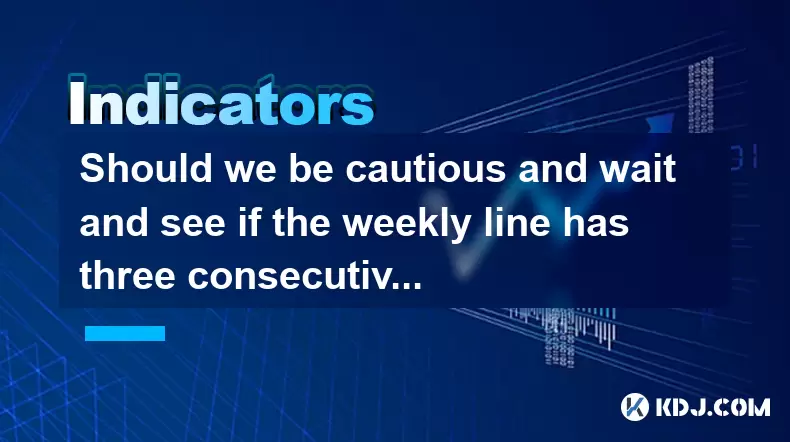
Should we be cautious and wait and see if the weekly line has three consecutive Yin lines + the daily MACD green column enlarges?
Jul 01,2025 at 12:42am
Understanding the Weekly Three Consecutive Yin Lines PatternIn technical analysis, three consecutive Yin lines on a weekly chart indicate a strong bearish trend. Each Yin line represents a week where the closing price is lower than the opening price, signaling consistent selling pressure. When this pattern appears three times in succession, it often sug...
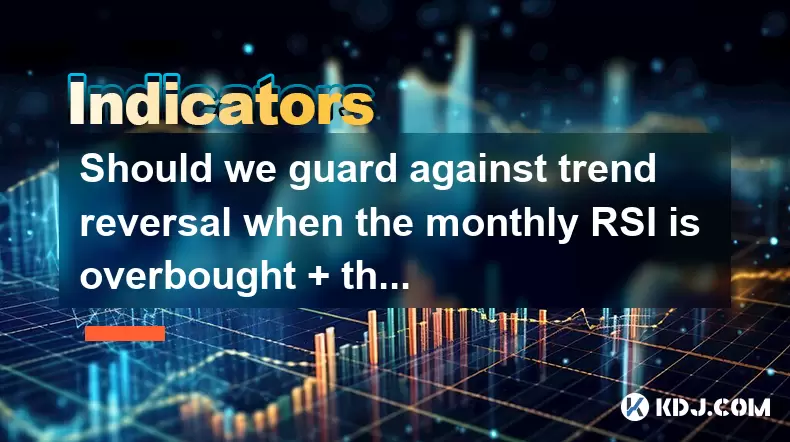
Should we guard against trend reversal when the monthly RSI is overbought + the weekly line has a long upper shadow?
Jun 30,2025 at 11:35pm
Understanding RSI Overbought Conditions in CryptocurrencyThe Relative Strength Index (RSI) is a momentum oscillator commonly used in technical analysis to identify overbought or oversold conditions in an asset. When the monthly RSI of a cryptocurrency reaches above 70, it is generally considered overbought, suggesting that the asset may be due for a pul...
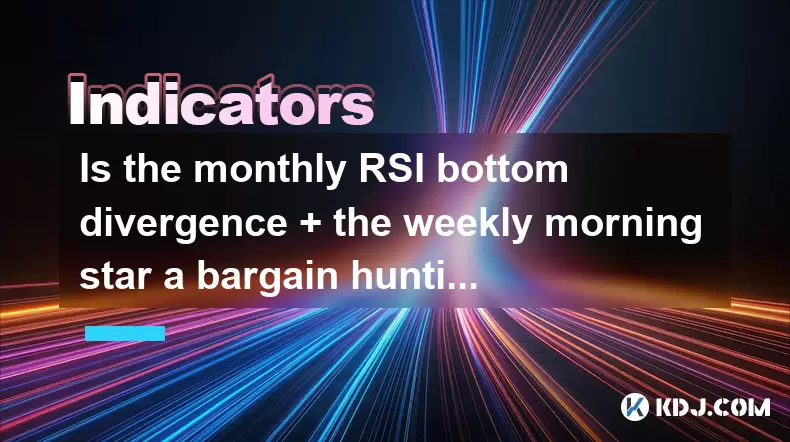
Is the monthly RSI bottom divergence + the weekly morning star a bargain hunting opportunity?
Jun 30,2025 at 09:57pm
Understanding RSI Bottom Divergence in Monthly TimeframesThe Relative Strength Index (RSI) is a momentum oscillator commonly used to identify overbought or oversold conditions in the market. When traders refer to a monthly RSI bottom divergence, they're observing a situation where the price makes a lower low, but the RSI makes a higher low on the monthl...
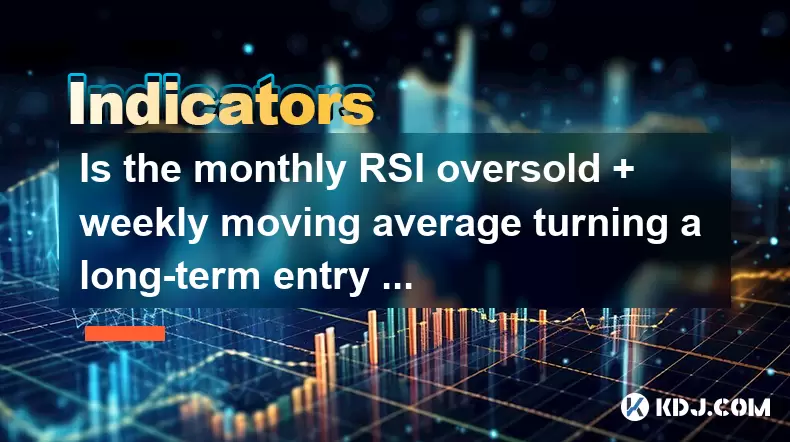
Is the monthly RSI oversold + weekly moving average turning a long-term entry signal?
Jun 30,2025 at 11:42pm
Understanding RSI and Its Role in Cryptocurrency TradingThe Relative Strength Index (RSI) is a momentum oscillator commonly used by traders to identify overbought or oversold conditions in the market. In the context of cryptocurrency, where volatility reigns supreme, understanding how RSI behaves on different timeframes becomes crucial. When the monthly...
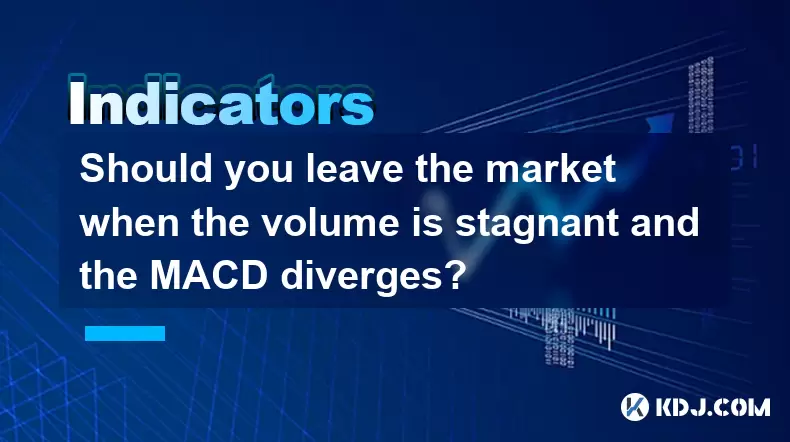
Should you leave the market when the volume is stagnant and the MACD diverges?
Jun 30,2025 at 09:36pm
Understanding Volume Stagnation in Cryptocurrency TradingIn the realm of cryptocurrency trading, volume plays a crucial role in determining the strength of price movements. When volume remains stagnant over an extended period, it suggests that neither buyers nor sellers are showing strong conviction. This often leads to sideways movement or consolidatio...

Can I add positions if the daily line breaks through the descending channel + the 30-minute moving average is in a bullish arrangement?
Jun 30,2025 at 11:00pm
Understanding the Descending Channel BreakoutWhen a daily line breaks through a descending channel, it indicates a potential shift in market sentiment from bearish to bullish. A descending channel is formed by drawing two parallel trendlines, where the upper trendline connects the lower highs and the lower trendline connects the lower lows. A breakout o...

Should we be cautious and wait and see if the weekly line has three consecutive Yin lines + the daily MACD green column enlarges?
Jul 01,2025 at 12:42am
Understanding the Weekly Three Consecutive Yin Lines PatternIn technical analysis, three consecutive Yin lines on a weekly chart indicate a strong bearish trend. Each Yin line represents a week where the closing price is lower than the opening price, signaling consistent selling pressure. When this pattern appears three times in succession, it often sug...

Should we guard against trend reversal when the monthly RSI is overbought + the weekly line has a long upper shadow?
Jun 30,2025 at 11:35pm
Understanding RSI Overbought Conditions in CryptocurrencyThe Relative Strength Index (RSI) is a momentum oscillator commonly used in technical analysis to identify overbought or oversold conditions in an asset. When the monthly RSI of a cryptocurrency reaches above 70, it is generally considered overbought, suggesting that the asset may be due for a pul...

Is the monthly RSI bottom divergence + the weekly morning star a bargain hunting opportunity?
Jun 30,2025 at 09:57pm
Understanding RSI Bottom Divergence in Monthly TimeframesThe Relative Strength Index (RSI) is a momentum oscillator commonly used to identify overbought or oversold conditions in the market. When traders refer to a monthly RSI bottom divergence, they're observing a situation where the price makes a lower low, but the RSI makes a higher low on the monthl...

Is the monthly RSI oversold + weekly moving average turning a long-term entry signal?
Jun 30,2025 at 11:42pm
Understanding RSI and Its Role in Cryptocurrency TradingThe Relative Strength Index (RSI) is a momentum oscillator commonly used by traders to identify overbought or oversold conditions in the market. In the context of cryptocurrency, where volatility reigns supreme, understanding how RSI behaves on different timeframes becomes crucial. When the monthly...

Should you leave the market when the volume is stagnant and the MACD diverges?
Jun 30,2025 at 09:36pm
Understanding Volume Stagnation in Cryptocurrency TradingIn the realm of cryptocurrency trading, volume plays a crucial role in determining the strength of price movements. When volume remains stagnant over an extended period, it suggests that neither buyers nor sellers are showing strong conviction. This often leads to sideways movement or consolidatio...
See all articles

























































































